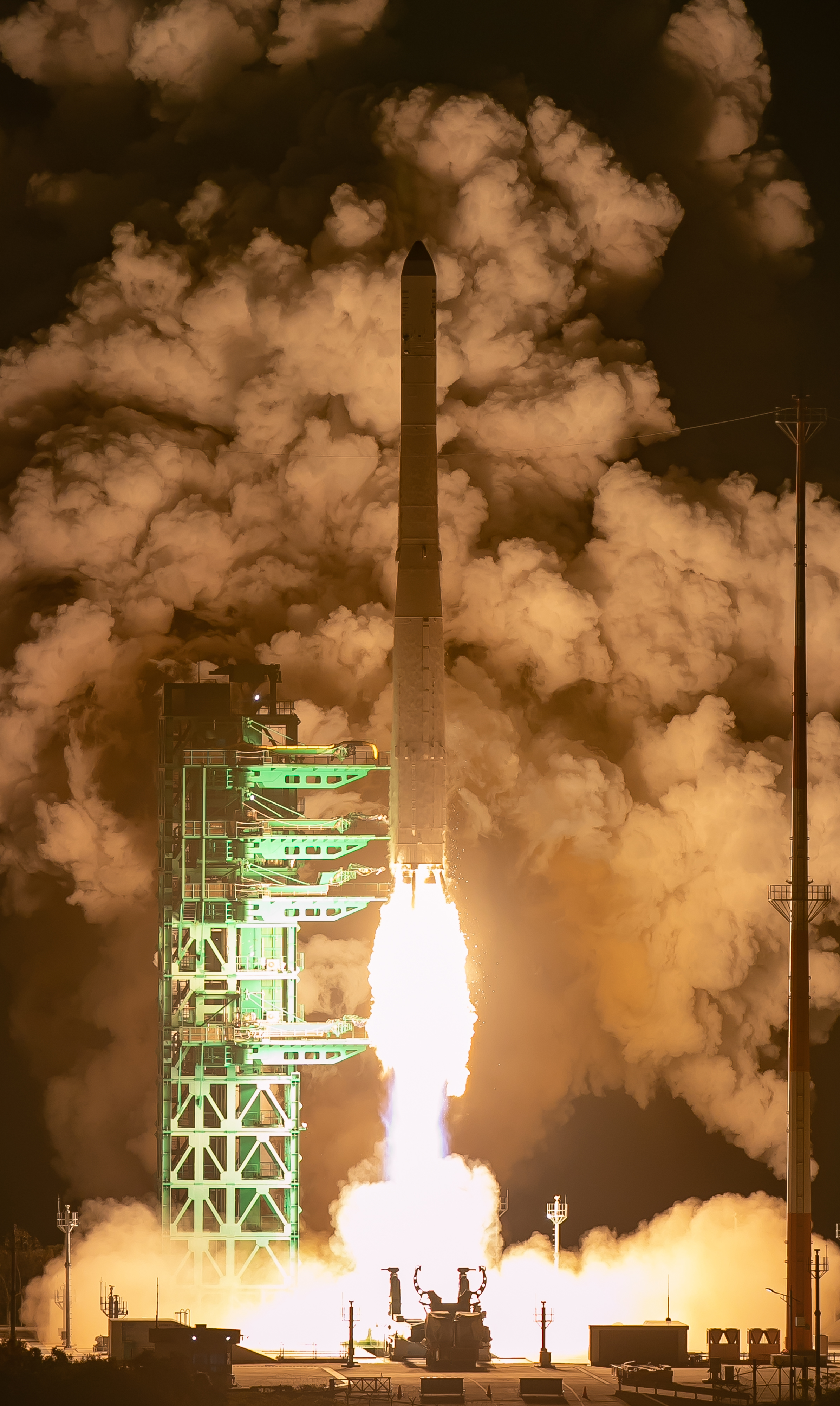- 한국어
- English
- 日本語
- 中文
- العربية
- Español
- Français
- Deutsch
- Pусский
- Tiếng Việt
- Indonesian
By Charles Audouin
Video = Korea Aerospace Research Institute
The homegrown space rocket KSLV-II, aka Nuri, blasted off for the fourth time in the early morning of Nov. 27.
At 1:13 a.m., the rocket was launched from the Naro Space Center in Goheung-gun County, Jeollanam-do Province, carrying into space CAS500-3, a next-generation medium-sized satellite, which will conduct space environment observation and bio-verification missions, and 12 cube satellites (CubeSats).
After takeoff, Nuri flew south at a launch azimuth, or the direction of a rocket at blastoff measured as an angle clockwise from north, of 170 degrees and detached its fairing — which had surrounded the first stage and the third carrying the satellite — and later the second in sequence before deploying No. 3.
The 12 CubeSats were subsequently released in sequence and the rocket's flight concluded 18 minutes later at 1:31 a.m.
Deputy Prime Minister and Minister of Science and ICT Bae Kyunghoon told a news briefing at the center, "Nuri successfully entered a sun-synchronous orbit with a final altitude of 601.3 km," adding, "The CAS500-3 and 12 CubeSats were successfully separated and went into orbit."
The CAS500-3's first signal was confirmed at 1:55 a.m. at the country's King Sejong Station in Antarctica. Developed by domestic universities and companies, the cube satellites will communicate with each ground station for scheduled monitoring of their status.
Korea AeroSpace Administration Administrator Yoon Youngbin said, "The government plans two more Nuri launches through 2027 and the advancement of next-generation launch vehicles with improved performance with an eye to further raise the country's space development capacity."

The homegrown launch vehicle Nuri (KSLV-II) on Nov. 27 at 1:13 a.m. blasts off from the Naro Space Center in Goheung-gun County, Jeollanam-do Province. The first launch in 2021 failed to reach its target orbit but the success of the second in 2022 and the third in 2023 confirmed the rocket's technology readiness level. (Korea Aerospace Research Institute)
For Nuri's first three launches, KAI was responsible for assembly and payload under government supervision. For the latest liftoff, however, Hanwha Aerospace led the process from launch vehicle manufacturing and assembly to management of participating companies, launching the "new space" era of advancing the country's space industry with the private sector at the helm.
For the fifth launch, the expansion of Hanwha Aerospace's role will depend on the results of an operational review and technology transfer. From 2028 after the sixth launch, the company will independently manage all aspects of the project from launch to transportation.
President Lee Jae Myung also congratulated Nuri's latest launch.
"This fourth launch is the country's first instance of a private company taking part in the entire process from launch vehicle production to operation, resulting in success," he wrote on his Facebook page. "I consider this evidence of Korea's self-reliance in science and technology that will serve as a cornerstone for future generations to boldly pursue even bigger possibilities."
"Building on today's success, I expect the Republic of Korea to take a major step forward as a space power."
caudouin@korea.kr